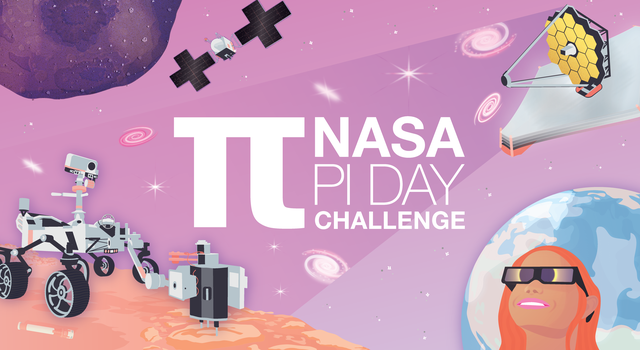Pi Day Notice and Wonder / Rad Reflection
Rad Reflection

The Hubble Space Telescope and James Webb Space Telescope are two of the most powerful and complex telescopes ever designed. Both instruments collect images of distant planets, stars, and galaxies—images that are used to help astronomers discover how the universe was formed. Have you ever wondered how space telescopes are able to capture photographs using mirrors and infrared light, or how large the mirrors must be to observe objects so far into the universe?
I notice —
- two telescopes that are in space;
- light from the stars and galaxies entering the telescopes;
- a tessellation of smaller hexagons into a large one where the middle one is missing;
- a galaxy and other astral images in the background;
- one of the telescopes is built in a tubular shape; and
- solar panels on the sides of the telescope.
What else do you notice? Share your thoughts on social media using the hashtag #PiDayNASAxNCTM and join the conversation!
I wonder —
- how high in orbit the telescopes are; how far off the ground the telescopes are;
- how long it took for the telescopes to get to space;
- what the hexagonal telescope represents;
- what the tubular telescope represents;
- what the telescopes are taking images of;
- how many stars are visible from this vantage point; and
- what causes those swirls in space.
What else do you wonder? Share your thoughts on social media using the hashtag #PiDayNASAxNCTM and join the conversation!

The graphic above was provided to NCTM by NASA's Jet Propulsion Laboratory (JPL) and is part of their
10th Annual Pi Day Challenge. Each year, JPL challenges students to solve some of the same problems NASA scientists and engineers do using pi! Each of the four problems uses math, science, and engineering to educate students about some of the agency's Earth and space missions.